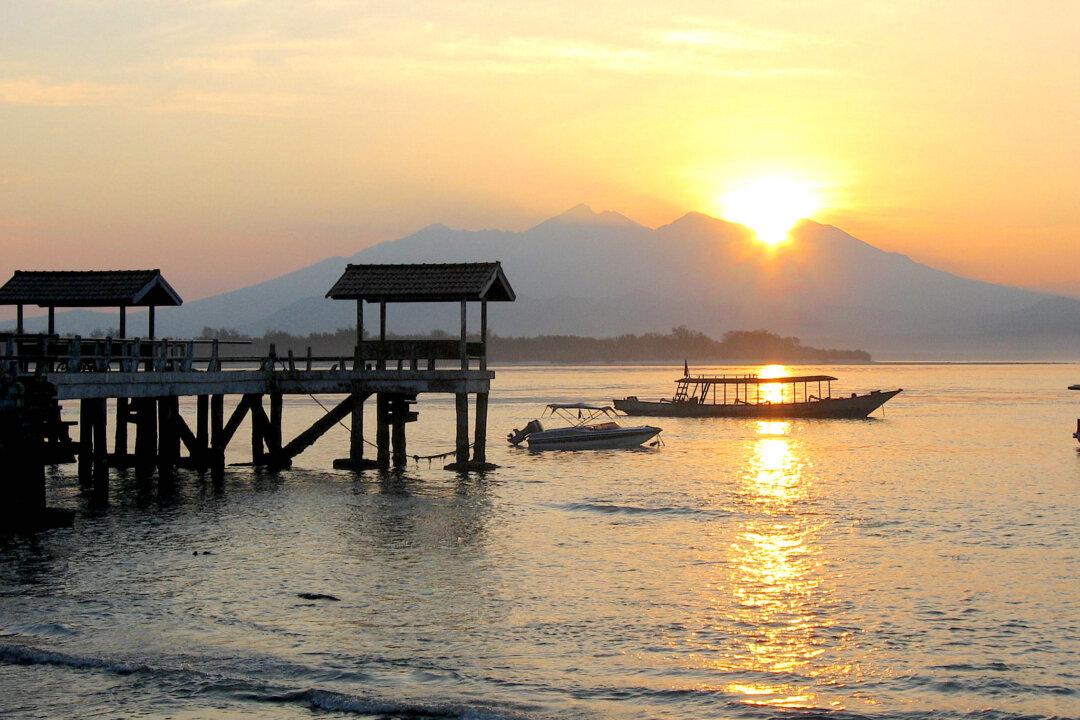Snorkeling along the edge of the reef that separates Gili Meno and Gili Trawangan, I drift along with the current. A giant sea turtle beats its flippers below, causing a school of fish to break formation and spark an endless chain of reaction in the ecosystem that lives on the precipice of a coral cliff.
The water here is like a warm bath, and it’s the same dreamy blue that it was when I first visited Indonesia 15 years ago. Not even the rosy tint of a faded memory can embellish the vivid colors or how both the air and water hover at a balmy 27 °C. Even the sea snakes, banded kraits—whose bite I am told can kill you in a matter of minutes—possess a benevolent charm as they glide by, uninterested by the boats that frequent the channel.


